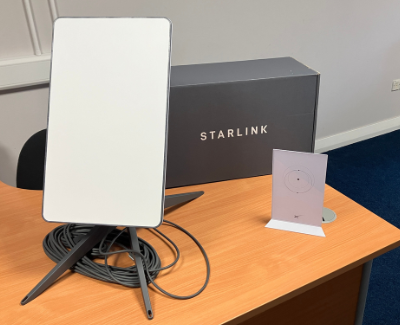


In our increasingly digital world, internet access has become an essential utility. However, for many rural and remote communities, broadband access remains limited and slow, affecting their ability to fully engage in the digital economy, education, and essential online services. While the National Broadband Plan (NBP) is set to address these issues, there are still countless communities that have yet to benefit from it. Enter Starlink—a game-changing satellite internet solution that offers fast, reliable internet for hard-to-reach areas as a stopgap measure until the NBP rollout reaches these locations.
Starlink, developed by SpaceX, is a satellite internet service designed to deliver high-speed internet anywhere, even in the most remote locations. Traditional broadband relies on cable and fiber infrastructures, which are often costly and slow to deploy in sparsely populated regions. Starlink, however, operates through a network of low-Earth orbit satellites, meaning it can bypass the need for ground-based infrastructure entirely. This makes it ideal for bridging the connectivity gap in areas awaiting broadband expansion.
Key benefits of using Starlink in rural and remote areas include:
While the National Broadband Plan promises to bring high-speed internet to every corner of the country, large-scale rollouts take time. Communities awaiting these developments face the challenge of remaining digitally engaged without proper broadband access, which affects everything from education and telehealth to business operations. By leveraging Starlink, communities can enjoy high-speed internet until the NBP reaches their area, supporting vital needs in the interim.
Enabling Education and Remote Work: For students and remote workers, internet access is a lifeline. Starlink's speeds allow for virtual learning platforms, research, and access to critical online tools, ensuring no one falls behind academically or professionally while waiting for traditional broadband.
Supporting Local Businesses: Small businesses in rural areas can use Starlink to stay competitive in the digital market, managing everything from online sales to customer support. Reliable internet access enables businesses to connect with suppliers, customers, and new markets, helping local economies thrive.
Facilitating Telehealth Services: Access to medical services through telehealth has become essential, especially in remote regions where physical access to healthcare providers may be limited. Starlink can provide the connectivity required for telehealth platforms, making healthcare more accessible to all.
Increasing Community Engagement: Libraries, community centers, and local government offices can use Starlink to improve digital access for the entire community. This means residents can attend virtual meetings, access government services, and participate in digital literacy programs even before broadband is available.
While Starlink provides valuable connectivity, it's essential to recognize that it is a temporary solution. Here are some considerations to keep in mind:
The National Broadband Plan is crucial to providing stable, long-term connectivity to rural and underserved areas, and it remains the ultimate solution for connecting communities to high-speed internet. However, during the interim, Starlink serves as an essential bridge, enabling connectivity and digital access to underserved communities. As the NBP rollout continues, Starlink can be phased out or repositioned as a backup, ensuring that everyone has consistent access.
Broadband availability in Cavan
Using Starlink as an interim solution is a forward-thinking approach to bridging the digital divide in rural areas until the National Broadband Plan reaches every community. While it may not be the final answer, Starlink’s fast and reliable connectivity allows communities to keep up with the digital demands of today’s world, ensuring that no one is left behind in the digital age.
By combining the ingenuity of satellite technology with the promises of the National Broadband Plan, rural and remote communities have a clear path to full connectivity—starting today. Starlink offers a glimpse of what’s possible while providing essential connectivity to those who need it most, keeping communities connected, resilient, and future-ready.